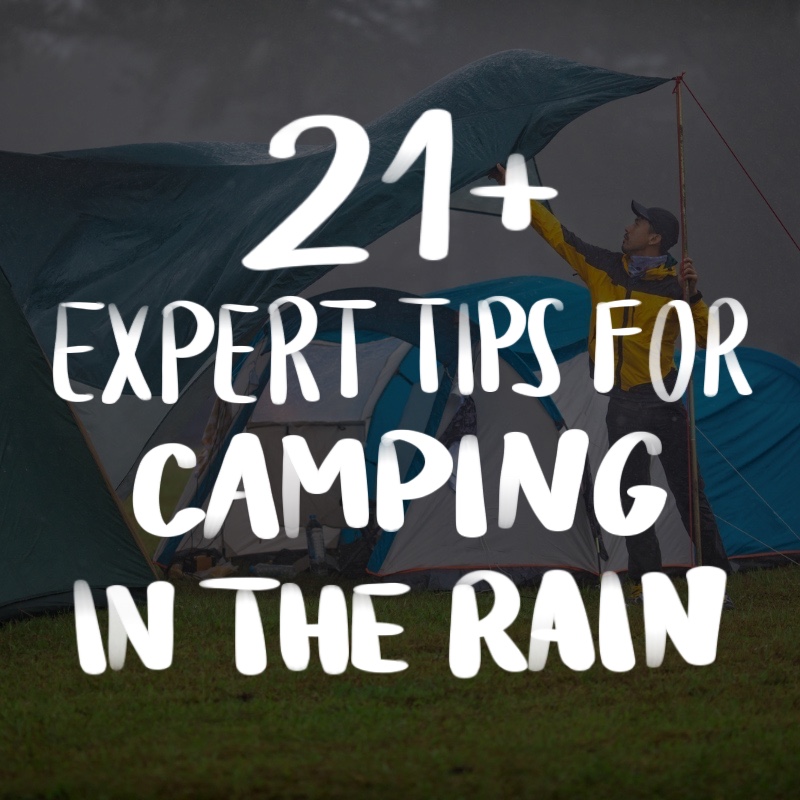
As a seasoned camping professional with over a decade of experience under the starry skies, I’m thrilled to take you on a journey through the fascinating history of camping.
Whether you’re a seasoned wilderness warrior or someone who’s just pitched the first tent, this comprehensive guide will provide valuable insights into the time-honored tradition of camping, from its humble beginnings to the modern-day adventure it has become.
It all started with a simple desire to connect with nature, but over the years, it evolved into a passionate pursuit that allowed me to explore some of the most breathtaking landscapes.
With a backdrop of starlit nights, mountain vistas, and serene lakes, camping is more than just a hobby; it’s a way of life.
So, whether you’re a novice camper looking to dip your toes into the world of outdoor adventures or a seasoned pro seeking to deepen your appreciation for this ancient practice, read on as I share my knowledge, wisdom, and experiences on the history and evolution of camping.
Table of Contents
The Origins of Camping
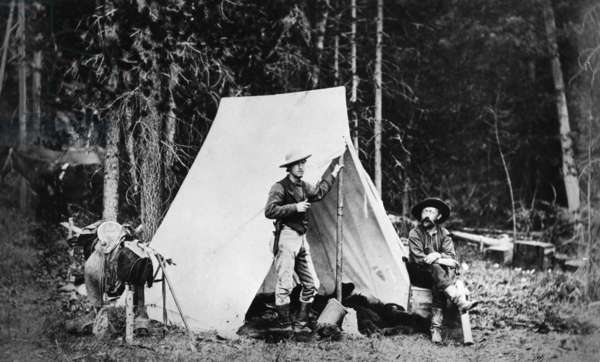
Camping, in its most primal form, has roots that reach deep into the history of humanity. Our ancient ancestors, the early Homo sapiens, were perhaps the first to discover the wonders of sleeping beneath the stars. Nomadic tribes roamed the land, setting up temporary shelters made of animal hides and plant materials, relying on the land to provide them with sustenance.
Shelter and Survival: The Earliest Camps
In the prehistoric era, camping was not a leisure activity but a fundamental component of survival. Early humans were nomadic, following seasonal patterns and the migration of game animals. They relied on nature’s resources and constructed shelters as they moved to sustain themselves.
The shelters of our distant ancestors were basic yet functional. Animal hides, leaves, and branches were the primary building materials. These structures were designed to be easily assembled and disassembled, allowing for swift mobility. Such shelters protected early humans from the elements and predators while they pursued sustenance and other resources.
Native American Teepees and Bison Hide Camps
The Native Americans, with their deep connection to the land, refined the art of portable shelters. Among their most iconic creations were the teepees. Crafted from a framework of wooden poles and covered in bison hides, teepees were ingeniously designed for nomadic life.
These conical structures were not only functional but also symbolized the profound relationship Native Americans had with the natural world. The bison, a vital source of sustenance and materials, was honored through the use of its hides in constructing teepees.
The versatility of teepees allowed them to adapt to various environments, from the open plains of the Great Plains to the rugged terrain of the Rocky Mountains. The design provided efficient insulation and could withstand the challenging weather conditions of North America.
The Nomadic Traditions of Mongolia
Across the globe, in Mongolia, a nomadic culture emerged that was deeply rooted in camping. The Mongolian ger, commonly called a yurt, is an enduring symbol of this way of life. These portable, circular tents were a testament to human ingenuity and adaptability in harsh environments.
Gers were designed with practicality in mind. Their wooden lattice frames were covered with felt and animal skins, making them robust enough to endure the Mongolian steppe’s frigid winters and sweltering summers. Nomadic Mongols could swiftly disassemble their gers and move to fresh pastures, reflecting their harmony with nature.
The circular design of the ger wasn’t only structurally sound but held cultural significance. The central support column, known as the “crown,” represented the unity of family and community. Within the yurt, every item had a specific place, reflecting the precision required to maintain a nomadic lifestyle.
In Mongolia, camping was a way of life beyond sleeping outdoors. It encapsulated the essence of human adaptability, sustainability, and the coexistence of civilization and nature.
As we venture deeper into the history of camping, we’ll explore how various cultures and civilizations contributed to the evolution of this ancient practice. The journey of camping takes us from survivalist roots to a diverse array of modern-day camping experiences.
Camping in Antiquity
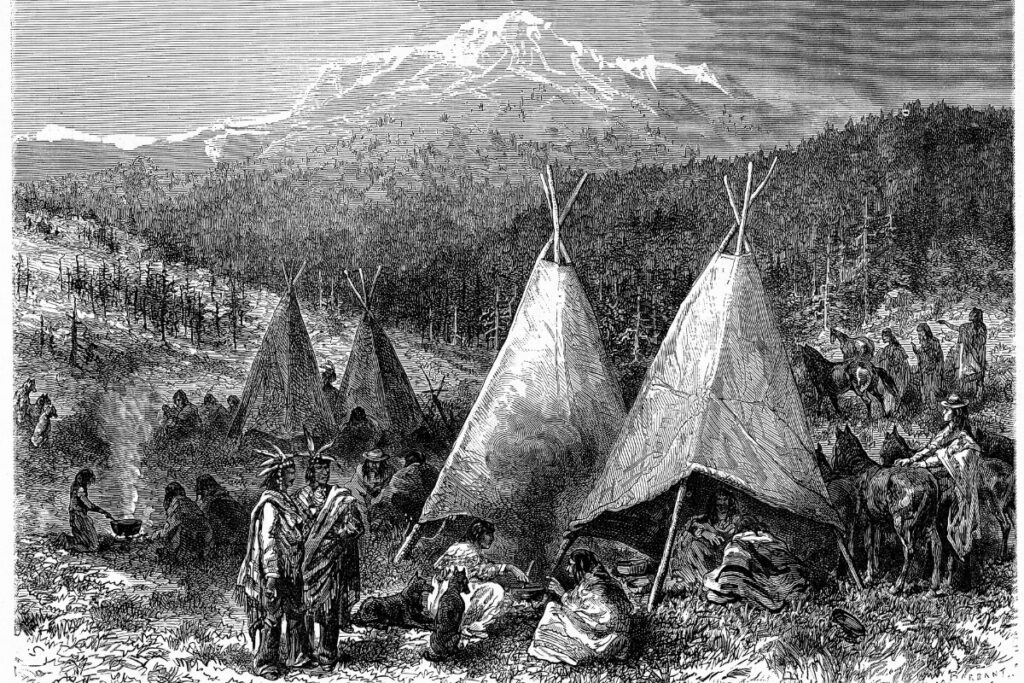
Camping, as a leisure activity, began to take shape in antiquity as various civilizations started to appreciate the rejuvenating power of nature. Here’s a glimpse into how camping evolved during these times.
Ancient Rome and the Campfires of Legionnaires
In ancient Rome, camping took on a different form due to the prevalence of military campaigns. Roman soldiers, known as legionnaires, were formidable warriors and expert campers. During their extensive conquests, they often established temporary camps, or castra, reflecting the organization and discipline for which the Roman Empire was renowned.
Roman military camps were meticulously planned and featured standardized layouts, including precise tent placement, roads, and plumbing systems. These camps provided safety and comfort to the legions as they marched across the empire. Beyond the practical aspects, Roman soldiers shared camaraderie around campfires and learned to adapt to various environments.
The Roman approach to camping influenced many aspects of modern camping, from campfire cooking techniques to the organization of campsites. It highlighted that camping could be functional and enjoyable, even during challenging times.
The Silk Road: A Network of Campgrounds
The Silk Road, the historic network of trade routes that connected the East and West, introduced a new concept of camping. Along the extensive and diverse routes of the Silk Road, various cultures intermingled, leading to the development of campgrounds and waystations.
Travelers on the Silk Road encountered a network of well-established camping facilities where they could find food, shelter, and companionship. These campgrounds facilitated the exchange of ideas and goods among people of different backgrounds.
Campgrounds along the Silk Road served as melting pots of culture, creating an environment of mutual respect and learning. Here, travelers shared stories and experiences, further demonstrating the communal aspect of camping and the value of forming connections with fellow travelers.
The Silk Road campgrounds underscored that camping is about surviving in the wilderness and embracing the collective experience of exploration and cultural exchange.
European Noble Pursuits
During the Middle Ages, European nobility embraced camping for leisure, creating extravagant tented villages during hunting trips, summer retreats, and other recreational pursuits. These elite campsites represented opulence and showcased the potential for luxury in the camping world.
The tents used by European nobility were far from the makeshift shelters of earlier centuries. They were adorned with fine textiles, tapestries, and ornate furnishings and resembled miniature palaces in the wilderness. The concept of “courtly love” often permeated these encampments, with nobles engaging in elaborate courtship rituals and extravagant feasts.
These extravagant camping experiences revealed that camping could be a luxurious escape from court life. The contrast between the ornate tents and the rustic natural surroundings added to the allure of camping for the European aristocracy.
Camping during antiquity demonstrated that it was necessary and a means of fostering camaraderie, cultural exchange, and luxury. As we continue our exploration of the history and evolution of camping, we will delve into how these ancient practices laid the foundation for the diverse and dynamic world of camping we know today.
The Birth of Modern Camping
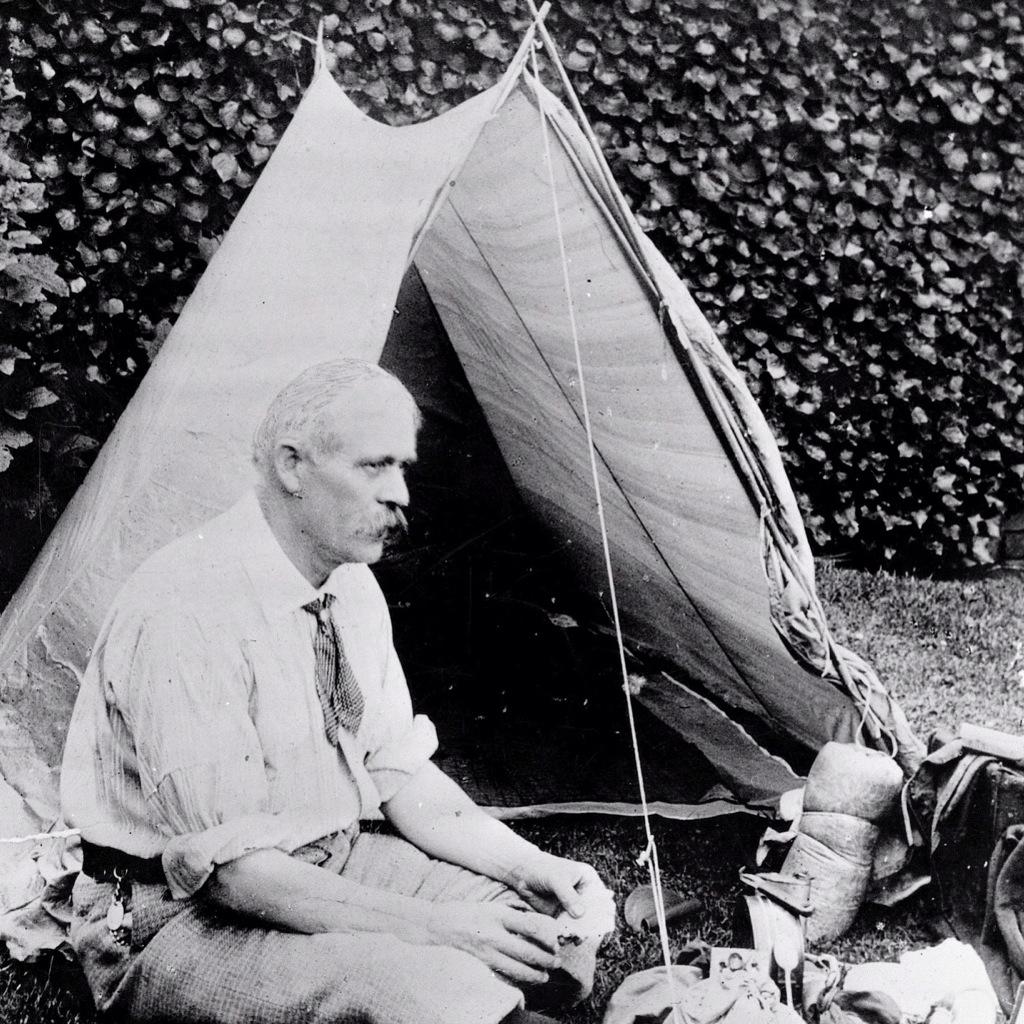
The 19th century marked a turning point in the evolution of camping, as the Industrial Revolution provided new tools and materials, making camping accessible to a wider audience.
Thomas Hiram Holding and the Camping Club
The catalyst for the modern camping movement can be attributed to Thomas Hiram Holding, a British tailor and the founder of the Camping Club in 1853. Holding is often celebrated as the father of modern camping for his profound influence on the leisure aspect of this outdoor pursuit.
Holding believed that nature had the power to offer solace and an escape from the fast-paced, industrial world. His experiences during a canoe trip down the River Thames in 1853 led him to write “The Camper’s Handbook,” a comprehensive camping guide. In this book, he laid down the principles of modern camping, emphasizing self-sufficiency, simplicity, and an appreciation for nature.
The Camping Club, initially formed as the “Association of Cycle Campers,” later became instrumental in promoting recreational camping. It organized camping trips and advocated for the protection of natural landscapes. Holding’s work helped establish camping as an enjoyable and rejuvenating pastime.
The Advent of Recreational Camping
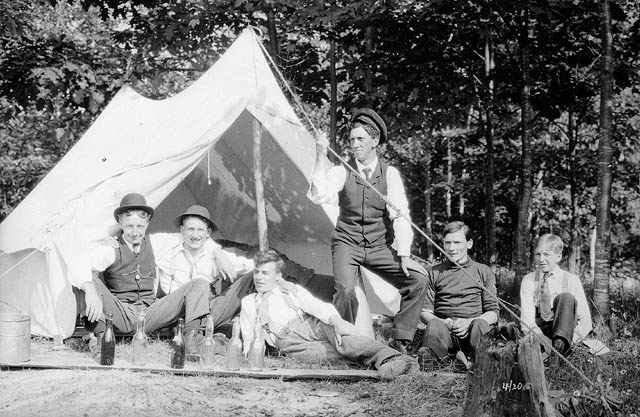
The mid-to-late 19th century saw the development of camping gear and equipment designed for leisure, marking the transition from a useful practice to a recreational one. Lightweight canvas tents, collapsible cots, and portable stoves became available, making it easier for ordinary people to venture into the wild.
One notable innovation was the iconic A-frame tent. In 1855, Thomas Hiram Holding designed a lightweight canvas tent that could be easily carried and set up. This innovation revolutionized camping, providing greater mobility and comfort. Campers no longer had to rely on bulky and cumbersome shelters.
The availability of portable cooking stoves allowed for more diverse and delicious meals to be prepared at campsites. The lightweight gear and easy-to-prepare meals made camping accessible to a broader demographic.
The American Influence: The National Parks System
The late 19th century in the United States brought about another significant development in the history of camping with the establishment of the National Parks System. The creation of Yellowstone National Park in 1872 marked the birth of the modern national park system, which aimed to preserve the natural beauty of the American landscape.
National parks, known as “pleasure grounds,” became popular destinations for campers, hikers, and nature enthusiasts. People flocked to these pristine landscapes, and camping became integral to the American outdoor experience.
Notable figures like John Muir, often regarded as the “Father of the National Parks,” played a crucial role in advocating for preserving these natural wonders. Their efforts helped set the standard for preserving and maintaining the integrity of these parks while making them accessible to the public.
The creation of the National Parks System provided a space for recreational camping and ignited a collective consciousness about the importance of conserving the environment. This era was pivotal in shaping modern camping, emphasizing preserving the wilderness while enjoying it.
As the 19th century ended, modern camping had firmly taken root. It had evolved from a survival necessity into a leisure pursuit that celebrated life’s simplicity and nature’s restorative power. The next chapter will delve into the 20th century, which brought further innovations and social shifts that propelled camping into a beloved pastime worldwide.
Camping During the 20th Century

The 20th century brought significant changes to camping as it became a beloved pastime worldwide. New technologies, materials, and societal shifts revolutionized how we experience the great outdoors.
The Great Outdoors for All: Mass Production and Camping Gear
A revolution in camping gear manufacturing marked the early 20th century. Mass production techniques made equipment more affordable and accessible, bringing camping to a broader audience – the range of products expanded from innovative tents to essential camping tools.
One notable invention was the dome tent, introduced in the early 1900s. Its design provided campers with more interior space and better stability in windy conditions. Dome tents soon became popular for their practicality and ease of setup.
Collapsible cots, sleeping bags, and portable stoves were developed during that time, enhancing the comfort and convenience of camping. These innovations allowed for more extended trips into the wilderness, as campers could now safely carry their home away from home.
World War Influences
World War I and II had a profound impact on camping. Soldiers who served in these wars were exposed to outdoor life and survival skills, which they often carried into civilian life. Surplus military equipment, such as tents and sleeping bags, became available to the public, fueling the camping trend.
The military experience prompted a new generation of campers skilled in campcraft, with a strong sense of self-sufficiency and the ability to adapt to various environments. This influence from the armed forces helped shape the outdoor skills and ethos of campers in the 20th century.
The Counter Culture Movement: Hippies and the Back-to-Nature Movement
The 1960s and ’70s witnessed a counter-culture movement that encouraged a return to nature. Hippies and environmentalists embraced camping to connect with the Earth and protest against modern consumer culture. This era marked a resurgence of traditional camping methods and a focus on sustainable practices.
Campers of this period often sought to distance themselves from the conveniences of urban life, opting for primitive campsites in remote areas. They practiced Leave No Trace principles before they were officially codified, emphasizing minimal impact on the environment.
Backpacking, in particular, became a popular form of camping during this time. Campers carried everything they needed on their backs, exploring pristine wilderness areas and rekindling a sense of harmony with nature.
The ’60s and ’70s exemplified a desire to break free from the confines of society and rediscover the intrinsic connection between humans and the natural world. During this period, camping became a symbol of countercultural ideals, a return to simpler living, and a celebration of the great outdoors.
Modern Camping: A Fusion of Tradition and Technology
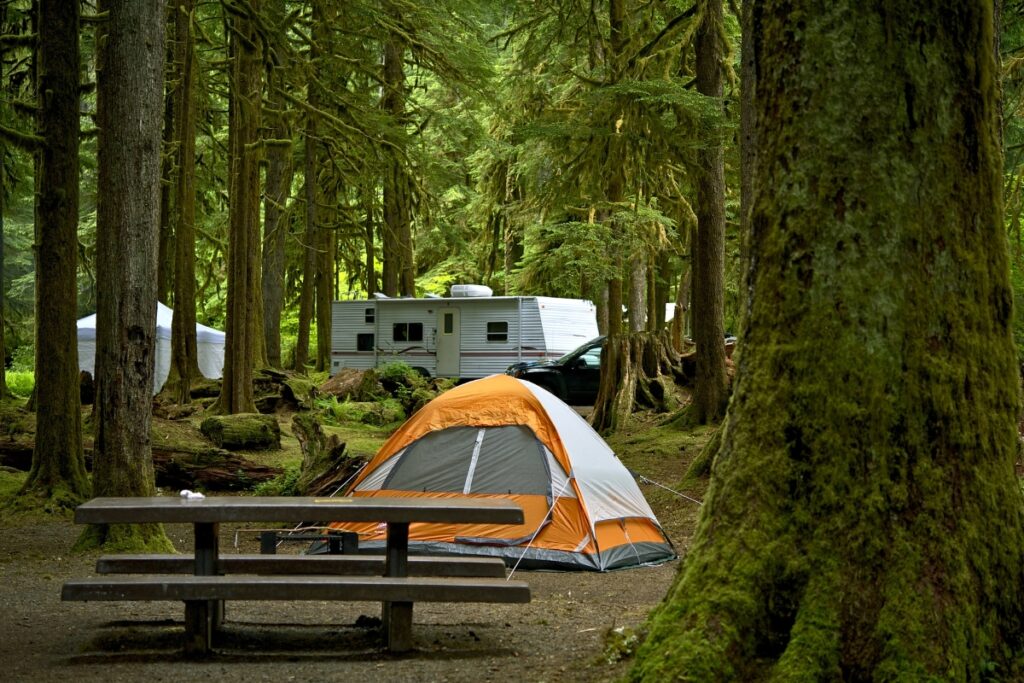
The 21st century has brought camping to new heights, blending the wisdom of the past with cutting-edge technology. The camping experience today is diverse and dynamic, offering options for everyone.
Glamping: A Touch of Luxury in the Wild
One of the defining trends of modern camping is “glamping,” a fusion of “glamorous” and “camping.” Glamping represents a shift toward luxurious outdoor experiences that combine the rustic beauty of the outdoors with the comforts of a high-end resort.
Campers stay in cozy yurts, safari tents with plush bedding, or even treehouses with all five-star hotel amenities in glamping. Gourmet meals are prepared under the stars, and campers can enjoy spa services and guided nature tours.
This modern approach to camping appeals to those who seek the serenity of the wilderness without sacrificing the creature comforts they are accustomed to. Glamping has broadened the camping demographic, attracting those who might not otherwise consider traditional camping.
Technological Advancements: From Solar-Powered Tents to Portable Espresso Makers
The 21st century has ushered in many technological innovations that have revolutionized the camping experience. Modern campers enjoy a range of high-tech gear, including solar-powered tents, portable power stations, and advanced GPS devices.
Solar-powered tents incorporate solar panels into their fabric, allowing campers to harness the sun’s energy to charge devices and power lighting. This innovation has extended the camping season, making staying connected in remote areas easier.
Portable espresso makers have become a cherished addition to many campers’ gear collections. Enjoying a freshly brewed cup of coffee in the wilderness is now a delightful morning ritual. These compact and lightweight devices have made it possible to savor gourmet coffee surrounded by nature.
Water filtration systems have also seen advancements, making accessing clean and safe drinking water in the outdoors easier. Campers can carry lightweight water filters or UV purifiers to ensure their hydration needs are met.
Leave No Trace: The Ethical Imperative
In today’s world, the Leave No Trace principles have become paramount. These guidelines emphasize responsible camping practices that ensure we preserve the environment for future generations. They include proper waste disposal, minimizing campfire impact, and respecting wildlife.
The Leave No Trace movement highlights the need to balance the desire for comfort and the responsibility to protect the natural world. Modern campers, whether novices or seasoned experts are increasingly mindful of their impact on the environment. They practice eco-friendly camping by choosing biodegradable gear and committing to minimizing their footprint.
The convergence of traditional camping values, such as appreciation for nature and self-sufficiency, with modern technology has made camping in the 21st century a remarkable and accessible pursuit. The diversity of camping experiences available today ensures that there’s something for everyone, from those who seek luxurious escapes to those who embrace minimalist adventures.
The Diversity of Camping
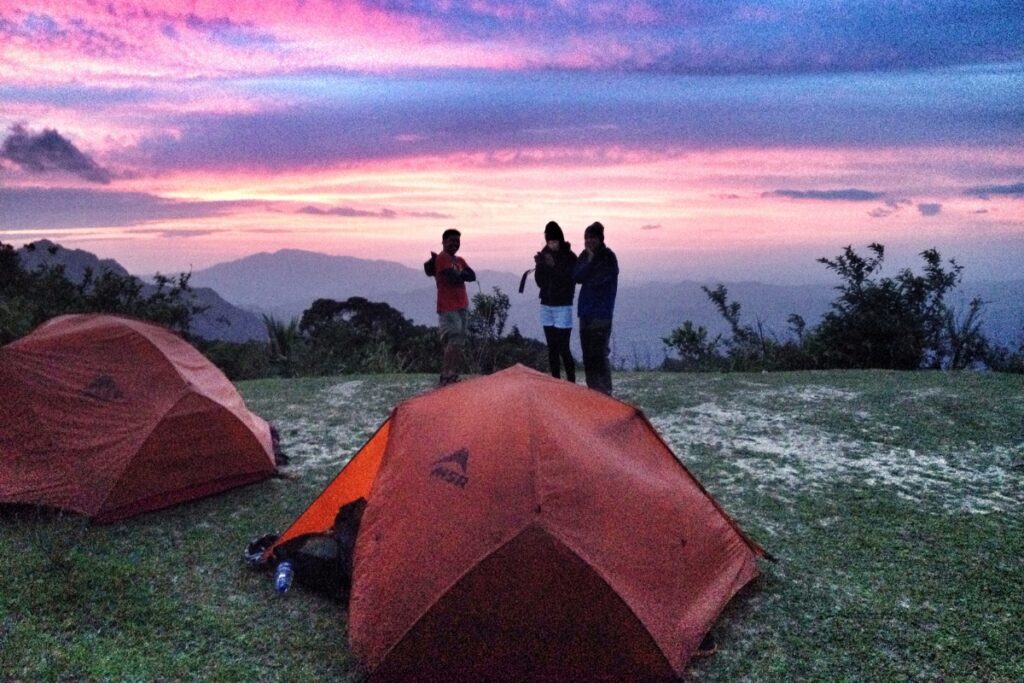
Camping today embraces many experiences, from traditional tent camping to the luxuries of glamping. This diversity caters to the unique preferences of modern adventurers, offering an adventure for every type of camper. This chapter will explore the rich tapestry of camping experiences available in the 21st century.
Tent Camping: The Classic Experience
Tent camping remains a timeless choice for many campers. Pitching a tent, cooking over an open flame, and sleeping beneath the stars evoke a deep connection with the wild. This classic camping experience harks back to the origins of camping when early humans relied on rudimentary shelters to survive.
Modern tent camping comes with various tent styles, from simple backpacking tents to spacious family tents that accommodate groups of campers. Choosing the right tent depends on factors like the size of your group, the location of your campsite, and your desired level of comfort.
Tent camping offers a sense of self-sufficiency as you create your shelter, prepare meals over a campfire, and immerse yourself in the natural world. It’s an opportunity to disconnect from the modern world and reconnect with the primal rhythms of nature.
RV Camping: Home on Wheels
Recreational vehicles (RVs) have redefined camping for those who seek the comforts of home while on the road. RV camping offers a unique blend of mobility, comfort, and adventure. These mobile homes provide convenience, amenities, and the flexibility to explore various destinations.
RVs come in various classes, from compact campervans to spacious motorhomes. They have kitchens, bathrooms, comfortable sleeping quarters, and entertainment systems. RV camping allows you to bring all the conveniences of home with you, from running water to air conditioning.
The allure of RV camping lies in the ability to journey to diverse landscapes while enjoying the comforts of home. It’s a family-friendly option that caters to travelers of all ages, making it an excellent choice for multigenerational trips.
Backpacking: Minimalist Adventure
For those who crave a more minimalist and immersive experience, backpacking offers the ultimate adventure. Carrying everything on your back, you can reach remote and pristine wilderness areas, truly connecting with nature.
Backpacking demands careful planning, as you must carry essential gear, food, and water. Campers often rely on lightweight equipment, such as ultralight tents and compact stoves. The experience is about simplicity, self-sufficiency, and a deep environmental appreciation.
This form of camping immerses you in the wilderness, where you can explore untouched landscapes, listen to the symphony of nature, and experience the tranquility of solitude. It’s a physically demanding but highly rewarding experience that fosters a profound connection with the natural world.
Beach Camping: Coastal Escapes
Camping on the beach is a unique experience, offering the soothing sound of waves, stunning sunsets, and the thrill of coastal adventures like surfing and beachcombing. Beach camping combines the tranquility of traditional camping with the allure of a seaside getaway.
To enjoy beach camping, you must check local regulations and obtain the necessary permits. Many beach campsites are primitive, with minimal amenities, making bringing your gear and supplies essential.
The proximity to the ocean provides opportunities for water sports, beach games, and stargazing under the clear coastal skies. Beach camping is perfect for those seeking a coastal escape and a deeper connection with the marine environment.
The Future of Camping
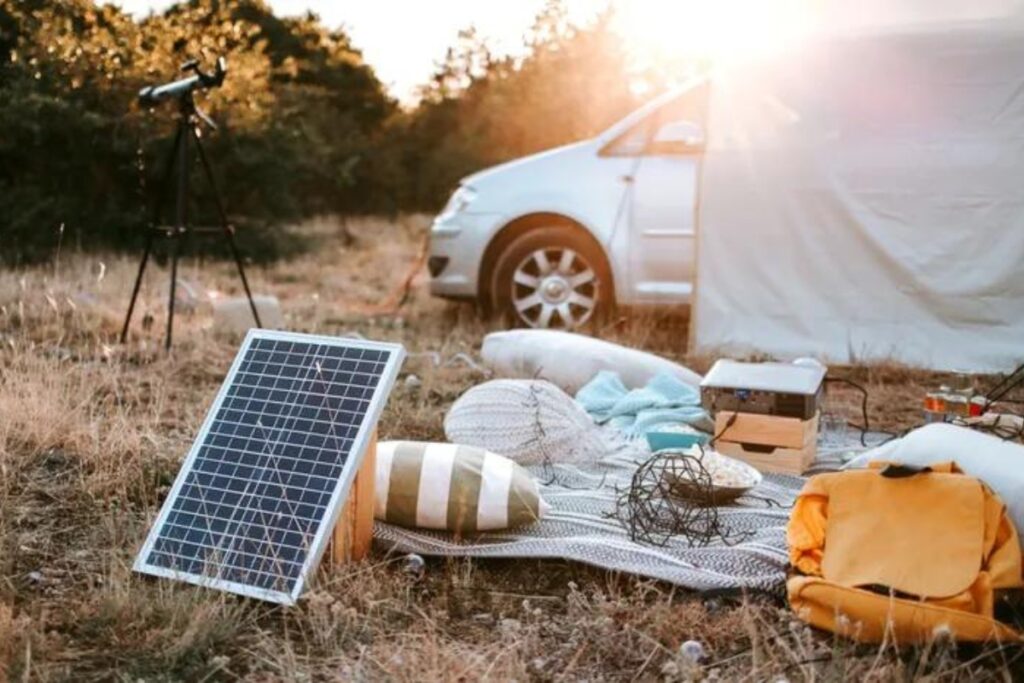
As camping continues to evolve, the future holds exciting possibilities. Emerging trends, innovations, and a growing awareness of environmental conservation are set to shape the camping experience for generations to come. In this chapter, we’ll peer into the crystal ball to explore the future of camping.
Sustainable Camping: Protecting Nature
With the growing awareness of environmental issues, sustainable camping practices have gained prominence. The future of camping will likely be more eco-conscious, emphasizing the need to protect the natural world while enjoying its beauty.
Campers are increasingly adopting environmentally friendly gear, using biodegradable products, and minimizing waste. Sustainable practices, such as Leave No Trace, are expected to become more than principles; they will become imperatives. Future campers will be responsible for preserving the environment, ensuring that nature remains pristine for future generations.
Innovations in sustainable camping include solar-powered gear, improved waste management systems, and a more comprehensive commitment to ethical and responsible outdoor recreation. The future campsites will prioritize ecological harmony while fostering a deeper connection with nature.
Virtual Reality and Outdoor Education
Technology integration into camping is expected to continue, offering new ways to experience the great outdoors. Virtual reality (VR) and augmented reality (AR) are revolutionizing outdoor education and adventure.
Imagine sitting in your living room but feeling like you’re hiking through a pristine forest, with a VR headset transporting you to breathtaking landscapes. These technological advancements make it possible to experience nature and outdoor activities without leaving the comfort of your home. VR and AR can serve as educational tools, inspiring new generations to appreciate and protect the environment.
Technology can also enhance camping safety, with GPS tracking and communication devices providing a sense of security for campers venturing into remote areas. Technology may be seamlessly integrated into the camping experience, enriching it without compromising the connection with nature.
Rediscovering Ancient Wisdom
As campers seek a deeper connection with nature and a return to simpler living, there is a resurgence in the interest in ancient camping practices. Traditional skills like bushcraft, survival techniques, and primitive outdoor cooking methods are becoming increasingly popular.
In the future, campers may explore and master these ancient skills, reconnecting with the wisdom of our ancestors. From crafting tools from natural materials to mastering fire-making techniques, these practices enhance the camping experience, making it a journey of self-discovery and self-sufficiency.
The future of camping is a fusion of modern technology and ancient wisdom, combining the convenience of high-tech gear with a deeper understanding of the natural world. Campers will seek to balance the modern and the traditional, allowing them to appreciate better and protect the environment.
Multisensory Camping
In the coming years, we can expect the development of multisensory camping experiences. These will encompass the visual and auditory aspects of the outdoors and the scents, textures, and even tastes of the natural world.
Imagine camping trips tailored to evoke specific emotions or memories using scents like pine or sea salt. Campers may immerse themselves in the natural world through interactive sensory experiences, forging deeper connections with the environment.
The multisensory camping of the future will offer a more holistic and immersive journey into the great outdoors, enhancing the emotional and psychological benefits of nature.
The future of camping holds promise and excitement. Sustainable practices, technological advancements, a return to ancient wisdom, and multisensory experiences are just a few of the trends shaping camping for the next generation of outdoor enthusiasts. Campers will continue to seek a deeper connection with nature while embracing future innovations. The world of camping is bound to expand, offering new horizons and adventures for all.
Timeline: The History of Camping – From the Past to the Future
Prehistoric Era:
- Nomadic human tribes camped in the wild, using primitive shelters made of animal hides and natural materials.
- Camping was primarily for survival, as these early humans followed seasonal patterns and the migration of game animals.
Antiquity (Approximately 500 BC – 500 AD):
- Roman military camps castra showcased meticulously planned layouts, including tent placement, roads, and plumbing systems.
- The Silk Road introduced campgrounds, creating spaces for trade, cultural exchange, and rest for travelers.
European Noble Camping (Middle Ages, 5th to 15th Century):
- European nobility enjoyed extravagant tented villages during hunting trips and recreational pursuits, blending luxury with outdoor living.
19th Century (1800s):
- Thomas Hiram Holding influenced the founding of the Camping Club in 1853.
- Emergence of mass-produced camping gear, including lightweight tents, collapsible cots, and portable stoves.
- The establishment of the American National Parks System began with Yellowstone National Park in 1872.
20th Century (1900s):
- World Wars I and II impacted camping, with surplus military equipment becoming available to the public.
- The 1960s and 70s saw a back-to-nature movement, with counter-culture camping enthusiasts seeking a return to simplicity and sustainability.
- The rise of car camping enables families to enjoy the outdoors with the comforts of home.
21st Century (2000s to Present):
- The emergence of glamping combines the rustic beauty of the outdoors with the luxuries of high-end resorts.
- Technological innovations include solar-powered tents, portable espresso makers, and water filtration systems.
- A growing emphasis on Leave No Trace principles, advocating responsible camping and environmental preservation.
- Integrating technology, including virtual and augmented reality, into the camping experience.
- A resurgence of ancient camping wisdom, with campers rediscovering traditional skills like bushcraft and survival techniques.
- The development of multisensory camping experiences enhances nature’s emotional and psychological benefits.
Embracing the Campfire of Time
The practice has come full circle in the grand tapestry of the history of camping and its evolution. From the nomadic tribes of our distant ancestors to the modern camper exploring high-tech gear, one thing remains constant: our desire to reconnect with nature and find solace in the great outdoors.
Camping, in all its forms, is a testament to the human spirit’s unbeatable desire to explore and find joy in the simplicity of life. Whether you are a seasoned outdoor expert or just starting your camping journey, remember that the legacy of camping is carried on by each generation of campers, by each tent pitch, and by each campfire story shared under the stars.
So, go forth, fellow campers, and keep the flame of camping alive, preserving the time-honored traditions while embracing future innovations. The world of camping is vast and full of wonders waiting for you to discover.
And if you’re looking for interesting activities for your next camping adventure, feel free to check out our blog post on 150+ camping activities and games to set you up for an entertaining camping trip!
If you like this article, feel free to drop us a comment below. 🙂
-
Aleksandar is a 29-year-old outdoor enthusiast with 10+ years of experience in camping and hiking. He found the Bored Adventurer because he loves spending his free time exploring the wilderness and sharing his experience with other fellow outdoor enthusiasts. Whether it’s the mountains or the seaside, summertime or winter, he jumps at every chance to escape the city and return to nature. His other interests include photography, digital marketing, and film.
View all posts


